SC farmers were promised amenities, crowds at new state market. 13 years on, they’re still waiting
Ernest Mazyck sits by himself in a beat-up office chair in the back of the S.C. State Farmers Market in Lexington County, waiting for customers to buy his array of vegetables. He’s surrounded by weathered crates, a yellow shopping cart and concrete every day. Except Sunday — he says working on Sunday is a sin.
He averages one customer a day, he says.
Thirteen years ago, Mazyck spent his days at the former State Farmers Market on Bluff Road. Vendors and customers from those days described the market as busy all the time, where people would fight to get produce, one customer said.
But in August 2010, the market moved to Charleston Highway in Lexington County. And since then, the crowds have stopped coming, Mazyck and other vendors say.
“I don’t know what’s wrong,” Mazyck said.
Customer traffic has declined, but angst has risen for South Carolina farmers and other vendors who say they were promised a variety of amenities at the new market, including an amphitheater. But those promises, they say, have never come to fruition, and many believe the farmers market’s move to Lexington County has ultimately been a disappointment. People have pointed fingers at politics and finances — and private developers — to blame for the poor outcome of the market, and farmers just keep waiting for something to change.
What went wrong?
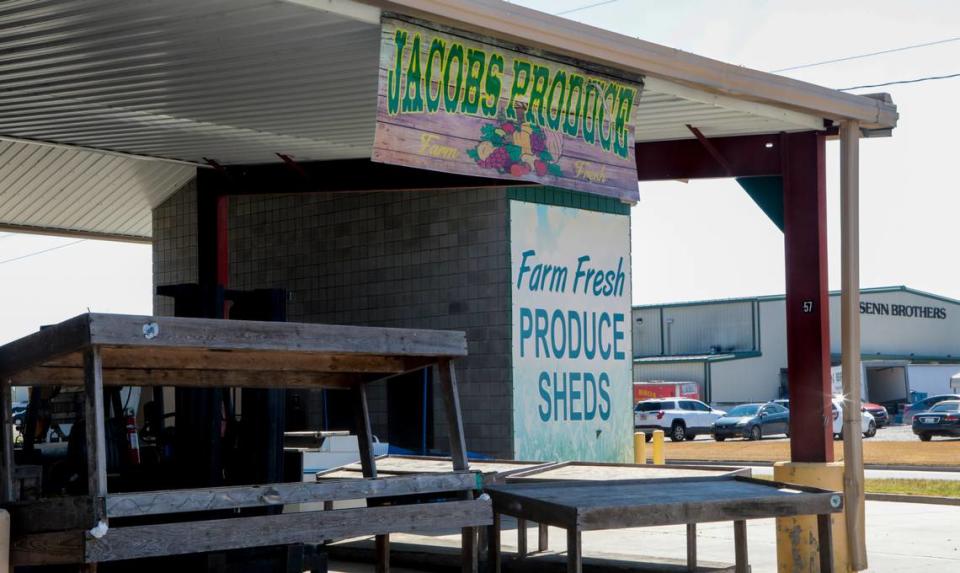
The market needed to move, the vendors say, because the old place was too worn down. At the old market, wholesalers did not have warehouse buildings and were violating food safety laws because their produce was in open air, according to a wholesaler. The new market has better facilities.
But it’s usually empty, with customer traffic peaking in the summer months.
The State Farmers Market sees approximately 250,000 customers per year, according to Eva Moore, the communications director for the state Department of Agriculture. The number includes people who attend events, such as the Midlands Plant and Flower Festival, as well as events where private entities rent space at the market.
The department does not have records of the number of visitors from the former market on Bluff Road. Moore said data from the former market would be difficult to compare to the market now, anyway.
“The Bluff Road site used to get a lot of football traffic — we used to take in $300,000 a year in parking revenue for games — and day-to-day retail traffic,” Moore said. “We think the market now probably sees less day-to-day retail traffic, but we draw more than we used to for events like the Plant and Flower Festival.”
The Midlands Plant and Flower Festival, the area’s largest selection of plants for spring planting, according to the agriculture department’s website, was held April 13-16 this year. According to past reporting by The State, a similar festival was held at the old location.
Lane Speciality Gardens owners Justin Lane and his wife started selling fresh vegetables and fruit at the market off Charleston Highway two years ago. They began selling ripe tomatoes, potatoes, yellow and green squash and more because the market moved closer to their home. The couple was enticed by the agriculture department’s advertisement of free stalls for farmers.
But that promise, they say, was a lie: The Lanes and other farmers pay rent for their stalls and say they’re losing money and not getting enough benefit in return.
For South Carolina farmers, the daily rate to lease a stall at the market is $20, according to the State Farmers Market website. An annual lease costs $2,100, and four-month seasonal leases are $825. For vendors reselling South Carolina produce bought from farmers, the daily rental rate is $30, while the seasonal rate is $1,200.
“It’s getting worse, to tell you the truth,” Lane said. “Business just dropped off. (The Department of Agriculture) said it was gonna be free for farmers, but the price (to rent) keeps going up.”
A scattered plan
When the market moved from Bluff Road to Charleston Highway in 2010, farmers and visitors were promised a lot of things, vendors say.
Private developers spearheaded the project due to minimal funds from the state government, according to David Tompkins, a former market manager. The state contributed $22.5 million toward the total $85 million cost of the project.
In the aftermath of the Great Recession of 2008, the state’s funds were tight, Agriculture Commissioner Hugh Weathers said.
“It was quite a challenging time for me, personally. I remember it well,” Weathers said. Weathers served as the mediator between the state, the Richland and Lexington county governments, the wholesalers, the farmers and vendors, and the investors.
According to Tompkins, former agriculture commissioner Les Tindal had dragged his feet to move the old market sooner. Tindal, who has since died, was succeeded by Charles Sharpe in 2002, who got planning rolling for the move.
Weathers picked up the project in 2004 after Sharpe started it.
“The move of the market was something that happened over years,” said Tompkins, who managed the market from 1988 to 2013, spanning both locations.
The state received $18 million from the University of South Carolina to buy the old market property on Bluff Road, Tompkins said. USC turned the property into Gamecock Park, now a popular, well-manicured tailgating site for USC football games.
Part of the $18 million was spent to make preparations at the first proposed location of the new market, at the end of Shop Road in Richland County, according to Tompkins. Some $4.4 million was spent relocating power lines and bulldozing the land for construction. But that money was poured into a site the market ultimately never moved to.
“There was a lot of turmoil going on when it was being moved,” Tompkins said.
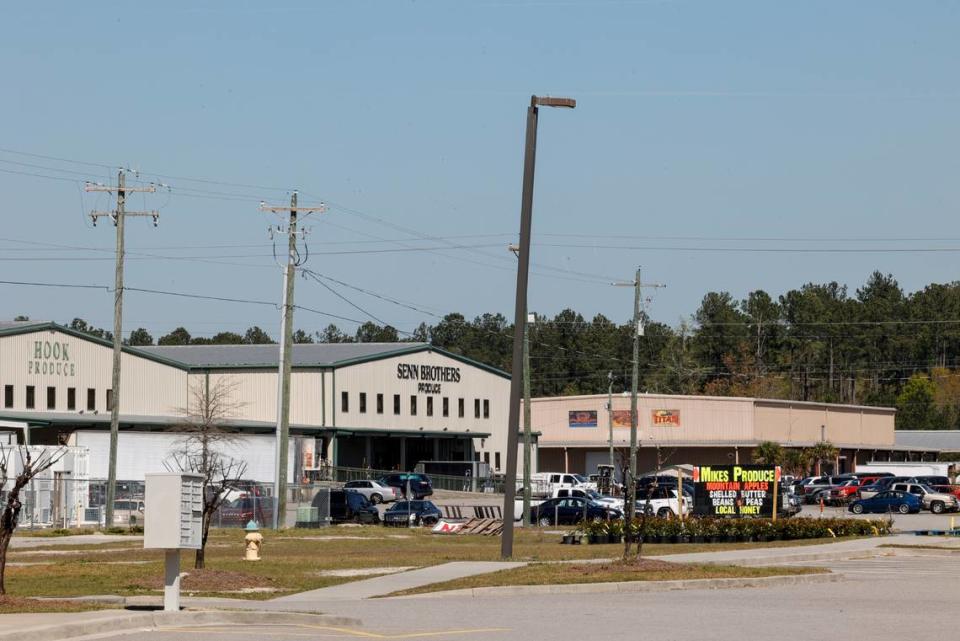
The market’s wholesale vendors, such as Senn Brothers Inc., complained to Weathers about the proposed spot on Shop Road. They weren’t going to move there, Weathers said.
Gary Prince, one of the owners of the Senn Brothers Inc., said Richland County was going to charge wholesalers for the construction of their own selling facilities at the new proposed market site on Shop Road. But, he said, that cost was far more than what it would cost the wholesalers to build their own facilities in Lexington County, in part due to the differences in taxes and business license costs between the two counties.
For Senn Brothers, it would have cost more than $6 million to build in Richland County versus around $2.5 million to build in Lexington County, Prince said.
“Richland County blamed the vendors for pulling out, but that was not it at all at the time,” Prince said. “It was because Richland County kind of changed the rules of the game and put us in a position where it was just going to cost us a lot more money to do their option.”
Senn Brothers was looking elsewhere to build its facility, and Lexington County offered a tax break to the wholesalers for their first 10 years at the eventual new site on Charleston Highway. Prince said that was the selling point, and the wholesalers wanted to go to Lexington.
Now, Weathers was caught between leaders of the two counties and the market wholesalers and forced to settle the conflict.
“We had to take the responsibility of balancing out everyone’s needs and try to reach a compromise,” Weathers said.
The entire experience was “a disaster” marred by politics, said Kit Smith, a former Richland County councilwoman and an architect of plans for the market in Richland County.
Smith said Richland County had hired a renowned farmers market planner and promised to spend $250,000 a year for the next 20 years to operate the market, with money allocated to advertising and more. The county spent two years planning outdoor venues and public transportation for customers to and from the market.
Weathers originally worked with Richland County Council, and their plan was set. But politics got in the way, Smith said.
“It was so political,” Smith said. “It all got to be about Republicans vs. Democrats. Lexington is a Republican County.”
Now 13 years after the market moved, the topic is still a sore subject for Richland County. State Rep. Todd Rutherford, D-Richland, proposed a plan last year to open a new state farmers market on Bluff Road. He said Lexington County “stole” the market from the Columbia area when it was announced that the market would be relocated, according to past reporting by The State.
Smith felt “abandoned” when the wholesalers backed out of the Richland County plan.
In May 2008, Hugh Leatherman, the former Senate Finance Committee head, directed $22.5 million toward Lexington County to relocate the market, sealing the deal. Leatherman died in 2021.
“It was (Leatherman’s) call, and he blew it,” Smith said. “He blew it.”
But the $22.5 million wasn’t going to cut it for the full needs of the new market. The market needed the help of private developers, and South Carolina wasn’t pitching in any more money.
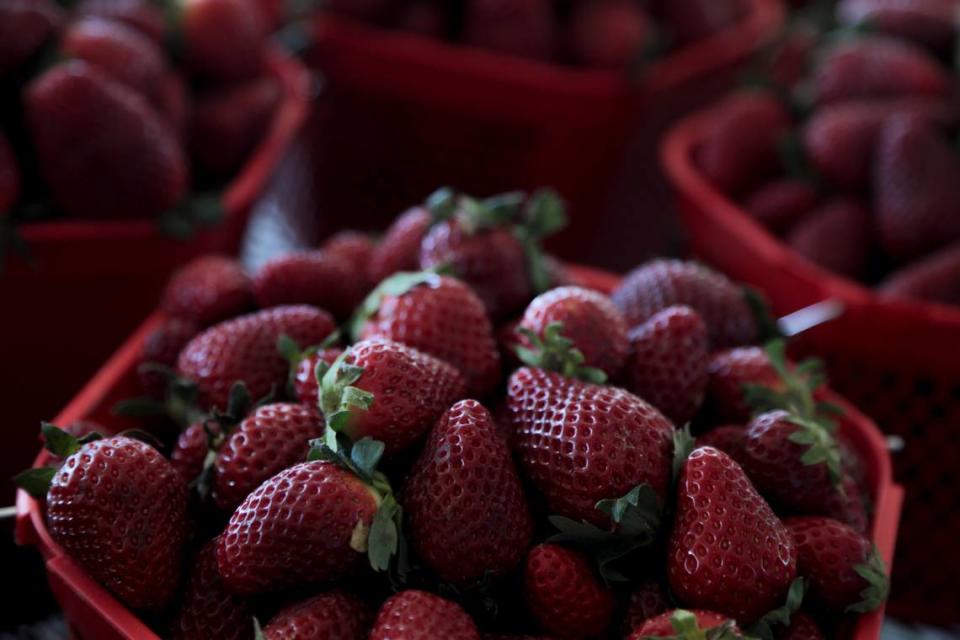
Broken promises
The private developers chosen to build out the market in Lexington County, Jim Anderson and George Lee, wanted to build an RV park, a 400-seat amphitheater, a bus drop-off area, a meat and seafood market, a bakery, a restaurant, a conference center and a demonstration kitchen, according to a 2010 press release from the Department of Agriculture. The market would need retail facilities, and retailers, to entice the average consumer to visit.
Only the restaurant, the conference center and the demonstration kitchen were built.
The market sits on 213 acres, 40 of which are owned by the state. The state owns the vendor sheds, the Department of Natural Resources building and the conference center. Wholesalers own and operate their own facilities at the market property. The restaurant, the demonstration kitchen and most of the empty land is owned by private investors, including Farmer’s Market Investments LLC and S2P LLC, a transportation company.
There are approximately 21 structures on site, including gardens, produce sheds and wholesaler facilities. Much of the property is concrete platforms and roads leading to nowhere.
The various entities spearheading the market don’t take the blame for the low traffic and missing amenities. Fingers are pointed elsewhere.
Smith, the former Richland County councilwoman, said Lexington County didn’t have a concrete plan for the market. There were also no plans for public transportation to and from the market.
Weathers said the agriculture department was given “insufficient” estimates by an engineering firm that was no longer in business when Weathers took over the project. This hindered the work to secure funds.
“(Weathers) was put in an extremely bad position,” Tompkins, the former market manager, said. “The state was not providing money for it. These investors came in and said, ‘We will do this. And here’s our plan.’ They took advantage of a situation.”
Weathers and Tompkins said they haven’t heard from Lee and Anderson since construction ended.
Lee said that neither he nor Anderson have owned any property at the State Farmers Market in the last five years after selling their land. He remembers the development of the State Farmers Market was a big project. Lee believes they upheld their deal with the state.
“We did the whole project on time,” Lee said. “On budget. No problems. Nothing ever filed on our construction.”
Though others have pointed fingers at the developers, Lee didn’t take responsibility for the unfulfilled amenities that were envisioned at the time the market moved. He said he and Anderson considered those amenities “conceptual” rather than promised and that nothing concrete had been mapped out.
“We were going to do it if the need arose,” Lee said. “The need never arose.”
Weathers said he was disappointed that the developers didn’t hold up what he considered their end of the bargain to build out the amenities, but he said he felt good about what they did accomplish for the economy of the state.
“It was mixed feelings, but overall, knowing what we were going to achieve, I was pleased,” Weathers said. “There are always disappointments if you don’t reach every goal.”
It still remains unclear why the amenities were never built. The state partially blames the investors, but each investor believes they did their part. Anderson said he left his role as an investor as soon as the new market opened and hasn’t visited since.
Neither Lee nor Anderson said they realized how low attendance was.
“They said they was gonna build all this stuff,” vendor Mazyck said, gesturing toward open fields and scattered tan warehouses on a recent morning at the market. “We’re just waiting. That’s all you can do.”
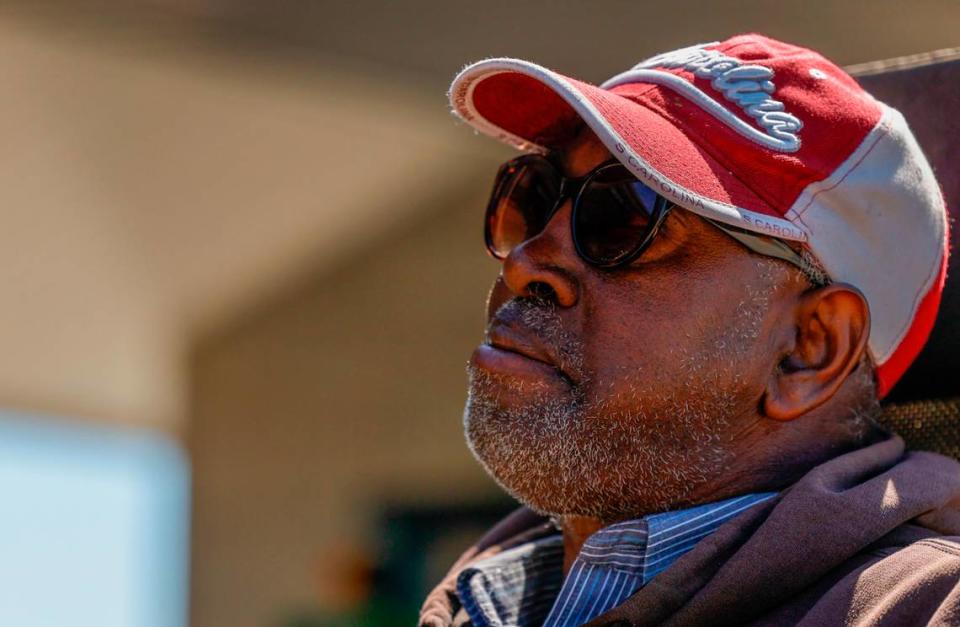
Change on the horizon
There is, however, new construction happening at the market property: A new headquarters for the state Department of Education is being built there, and a facility for the Department of Natural Resources will follow. Weathers said that activity is good news.
“That will put in many, hundreds of people on the farmers market campus,” Weathers said. “It will change the dynamics of the farmers market.”
The Department of Agriculture also has plans for new retail buildings, Weathers said, though he would not elaborate on the details of those plans.
“It’s just in the drawing board phase now,” he said.
While customer traffic remains low, those who come are often loyal, repeat visitors, vendors say.
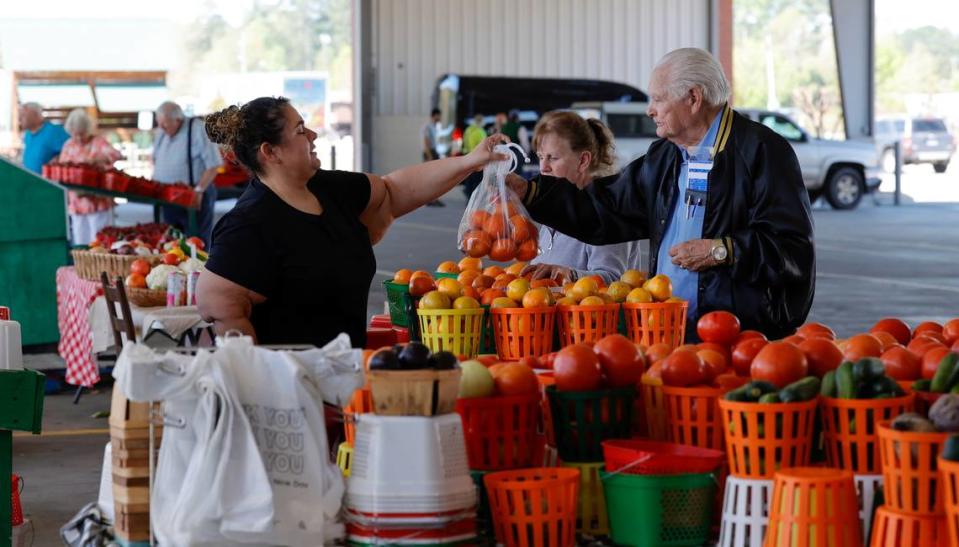
Sandy Northcutt used to haul produce from Georgia, Florida and Tennessee to the old Bluff Road market for 19 years.
“This one isn’t as busy by no means,” Northcutt said, gesturing to the four vendors selling under the Certified South Carolina Farmers North Shed.
His wife, Brenda, says this market is easier to get to than the old one on Bluff Road. She comes for the cheaper and high-quality produce. She doesn’t visit the grocery store for fruits and vegetables often.
But Brenda says she liked the old market better. There was more to choose from at the old market, she says.
Roger Wicker sells raw milk at the market almost every Friday. He hops among other South Carolina markets, too, because business isn’t good here.
He said he’s thankful for the move because the new location is a lot nicer and bigger. He also said he’s noticed that the market is getting busier and doesn’t have many complaints.
“Either way, it’s still good,” Wicker said, interrupting his conversation with a customer he knows by name.
Vendors said Weathers and other government officials visit often. Mazyck said he gets a lot of support from the agricultural department.
“They try to do the best they can,” Mazyck said. “Like I said, this market just ain’t putting out at all.”

